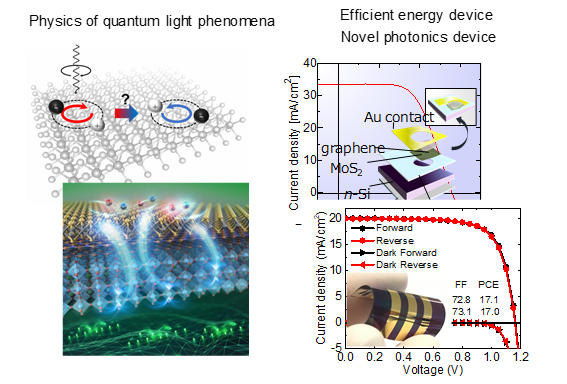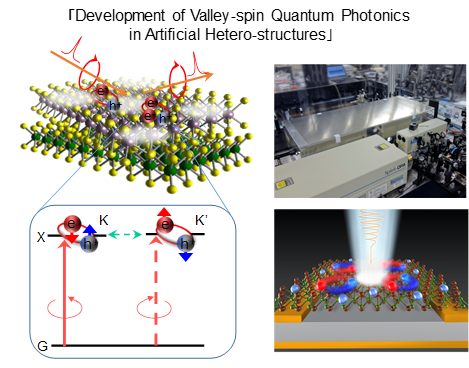Nano Optical Science
Advanced Energy Conversion Division Nano Optical Science Research Section
Professor : Kazunari MATSUDA
We are studying about development of novel optical science and its application for energy based on nano-science from the viewpoint of solid state physics, material science, and device engineering.
http://www.iae.kyoto-u.ac.jp/conv/en/index.html
Development of Novel Optical Physics and its Application for Energy Conversion
Research objectives in our group are "development of novel optical physics and its application based on nano-science for energy generation and conversion". We are trying to open new horizon on the energy science by introduction of nano-materials, quantum optical physics, and device application. The understanding of physics of emerging quantum optical phenomena in extreme low-dimensional materials are important issues toward next generation light energy sciences.
1) Photophysics and Applications of Nanomaterials
In the nano-meter size materials (nano-material), the novel electronic and optical properties are emerged by quantum effect of electronic systems. Our research focuses on photophysical properties and applications of nanomaterials including carbon nanotubes, graphene, and atomically thin semiconductors in which distinct quantum effects dominate their physical properties. We make use of advanced optical spectroscopic techniques to clarify the physical properties of nanomaterials for developing novel energy-efficient devices.
Physics in quantum light phenomena, and application for novel energy devices.

(Left) Schematic of valley-spin polarized exciton dynamics in atomically thin materials and novel excitonic states in their artificial hetero-structures. (Right) Novel energy conversion device based on atomically thin semiconductors and graphene. Flexible solar cell device using the organic-inorganic perovskite materials.
2) Novel Photonics Based on Atomically Thin Materials
Atomically thin-layered material including graphene comprising from monolayer carbon atoms has attracted much interest for both fundamental research and practical application because of exotic quantum states. In the atomically thin materials, the strong coupling of valley and spin degree of freedom induces novel physical degree of freedom as "valley-spin" in monolayer two dimensional transition metal dichalcogenides (MX2; M=Mo, W, X=S, Se, Te). Recently, we found the new route for valley-spin quantum optics through the series of studies by quantum control of valley-spin states, revealed by femtosecond ultrafast spectroscopy and field effect transistor (FET) device. Thus, we would like to develop the new field of valley-spin quantum photonics providing great impacts on the optical and material science research. Moreover, we extend these fundamental studies to application of valley-spin quantum photonics.

(Left) Schematic of quantum control of valley-spin polarized states in artificial hetero-structure. (Right) Experimental setup of state of art femtosecond spectroscopy and device structure for valley-spin quantum optics.








